Introduction
Getting approved for a personal loan with bad credit isn’t easy but it isn’t impossible either. Many lenders now offer unsecured personal loans designed specifically for borrowers rebuilding their financial footing.
Unlike secured loans, these don’t require you to pledge a car, savings account, or other collateral. Approval depends mainly on your credit history, income, and ability to repay which means understanding how lenders evaluate risk is the first step toward improving your chances.
In 2025, the unsecured personal loan market has expanded significantly, with banks, credit unions, and online lenders all offering more flexible programs for subprime borrowers. That growth, however, also brings more fine print and higher risk of unfair terms for those who rush to apply.
This guide breaks down how unsecured personal loans work when you have bad credit, how to boost your approval odds, and what to look for or avoid before signing an agreement. You’ll also see practical alternatives worth considering if traditional approval isn’t within reach yet.
Key Takeaways
What to Know
- Unsecured personal loans don’t require collateral; lenders rely on your credit score, income, and repayment history.
- Bad-credit borrowers can qualify, but interest rates and fees are typically higher than for prime borrowers.
- Prequalification tools let you compare loan offers safely without hurting your credit score.
- Improving your debt-to-income ratio (DTI) or adding a co-signer can raise your approval odds and lower your APR.
- Not all lenders are equal: compare APRs, terms, and reputation to avoid predatory offers.
- Other options exist: credit union loans, secured personal loans, and income-based programs may offer safer or lower-cost paths to funding.
Disclaimer: This site contains affiliate links. If you make a purchase, we may earn a commission at no extra cost to you.
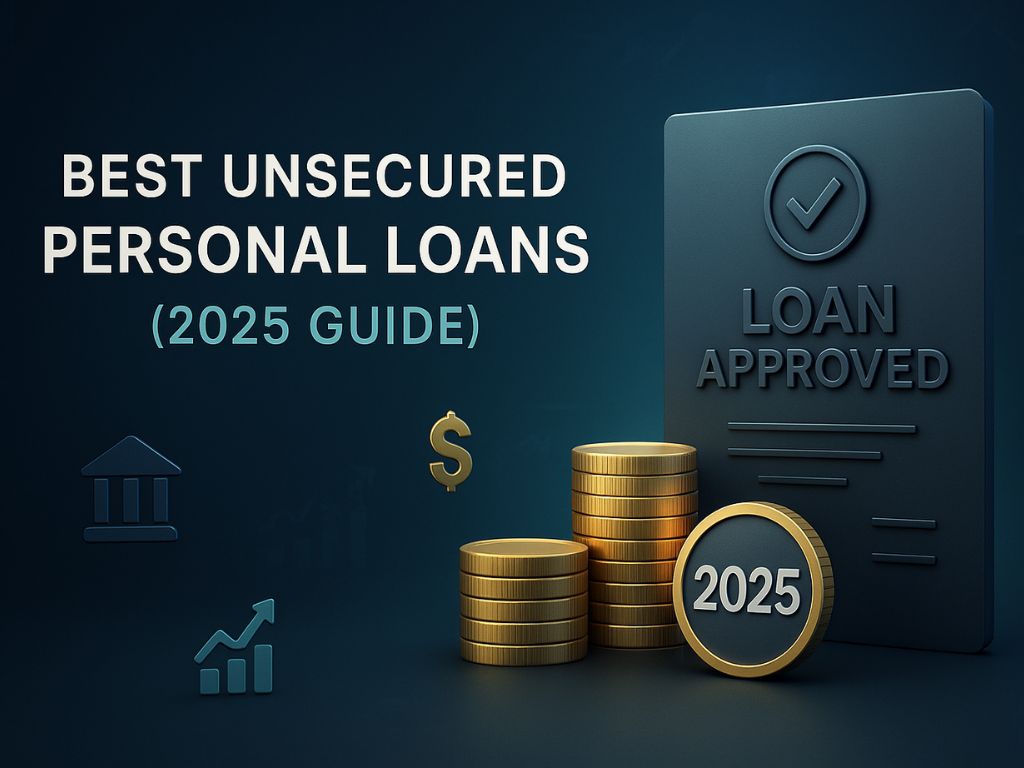
What Is an Unsecured Personal Loan and Why It Matters If You Have Bad Credit
An unsecured personal loan is a type of financing that doesn’t require collateral. Instead of pledging an asset, you qualify based on your creditworthiness mainly your credit score, income, and debt-to-income ratio.
That structure makes these loans both more flexible and more expensive for borrowers with bad credit. Without collateral to back the debt, lenders carry more risk, so they charge higher interest rates and may limit loan amounts.
In most cases, unsecured personal loans are used for debt consolidation, emergency expenses, or major purchases that you want to repay over time in fixed monthly installments.
For borrowers with low credit scores, the appeal is simple: you can access cash without putting your property or savings at risk. The trade-off, however, is cost. Even a few percentage points in interest can make a major difference in the total you repay.

📊 Typical Loan Amounts and APRs by Credit Tier (2025)
The table below outlines the general borrowing limits and average APR ranges across different credit tiers:
| Credit Category | Approx. Score Range | Typical Loan Amount | Average APR Range |
|---|---|---|---|
| Excellent Credit | 740+ | $10,000 – $100,000 | 7% – 12% |
| Fair Credit | 620 – 739 | $5,000 – $50,000 | 12% – 20% |
| Bad Credit | Below 620 | $1,000 – $25,000 | 18% – 35% |
According to the Consumer Financial Protection Bureau (CFPB), borrowers with subprime credit typically face interest rates more than double those of prime borrowers. Comparing multiple offers and reading full disclosures can significantly reduce total borrowing costs.
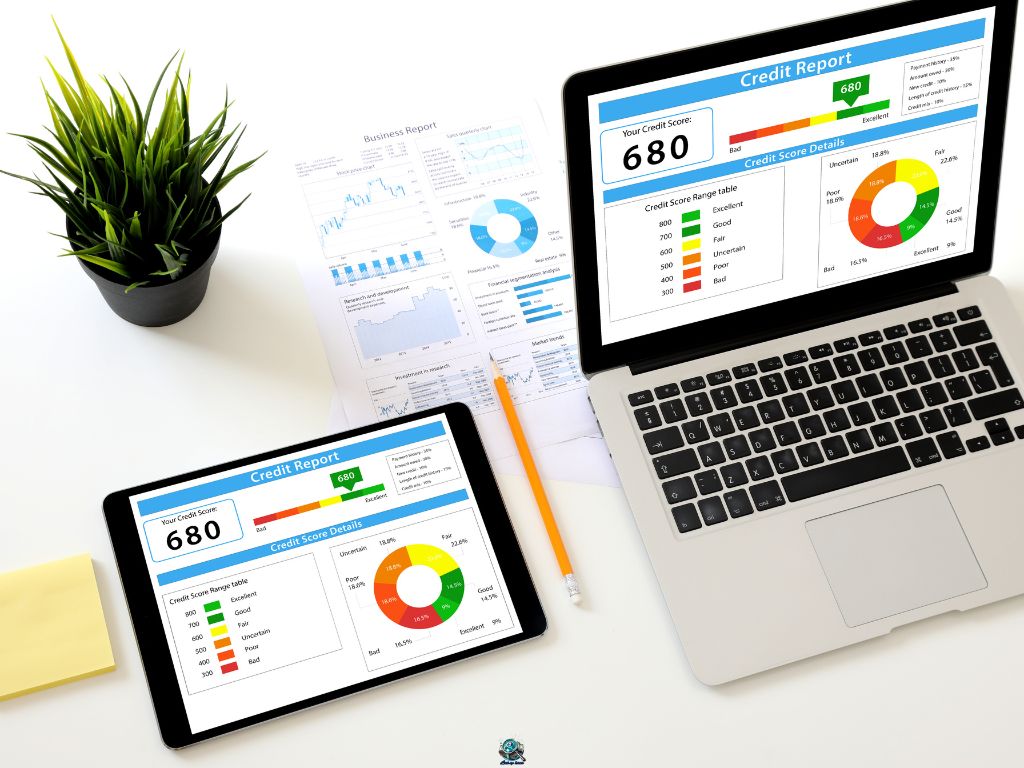
How to Increase Your Chances of Getting Approved
Even with bad credit, approval for an unsecured personal loan is possible but it takes preparation. Lenders want proof that you can manage debt responsibly, even if your score isn’t ideal.
Here’s how to strengthen your application before you apply.
1. Check and Clean Up Your Credit Report
Start by reviewing your credit reports from all three bureaus Experian, Equifax, and TransUnion.
Look for errors such as outdated accounts, duplicate entries, or incorrect late payments. Disputing even one mistake can raise your score by several points and improve your loan terms.
Tip: Use AnnualCreditReport.com to access your free reports. Check them at least 30 days before applying to allow time for corrections.
2. Lower Your Debt-to-Income Ratio (DTI)
Your DTI ratio shows how much of your income goes toward debt each month. Lenders prefer borrowers below 40%.
If you’re above that threshold, focus on paying down small balances first; this not only improves approval odds but can also boost your score slightly.
Example: If you earn $3,500 per month and pay $1,400 toward debt, your DTI is 40%. Paying off a $300 credit card balance drops it to 31%, making your application stronger instantly.
3. Add a Co-Signer with Strong Credit
Many lenders allow a co-signer, someone with solid credit who agrees to share responsibility for repayment.
This reduces risk for the lender and can unlock lower rates or higher loan amounts.
However, it also puts your co-signer’s credit at risk if payments are missed, so choose someone who understands the responsibility.
4. Use Prequalification Tools
Most reputable lenders offer prequalification that uses a soft credit check meaning it won’t affect your credit score.
Prequalifying helps you compare potential rates and terms safely and identify which lenders are most open to your profile before submitting full applications.
5. Build Payment History with Small Credit Products
If your credit file is thin, use small, manageable products like a credit-builder loan or a secured credit card.
Three to six months of consistent on-time payments can make a measurable difference in how lenders view your reliability.
According to the Federal Reserve’s 2025 Consumer Credit Report, borrowers who reduced their DTI by just 10% or added a co-signer improved their unsecured loan approval odds by nearly 40%. Consistent, verified income remains the strongest predictor of approval.
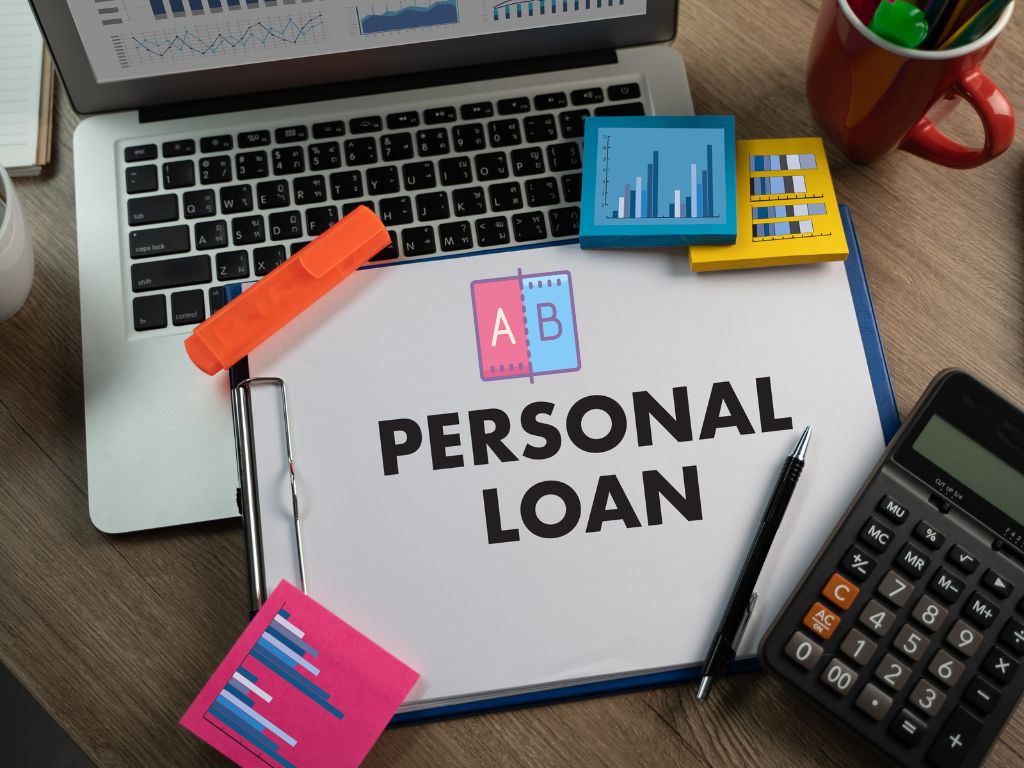
What to Look for (and Avoid) When Comparing Lenders
Finding the right unsecured personal loan when you have bad credit isn’t just about approval, it’s about getting terms that protect your financial stability. Rates, fees, and repayment structures vary widely between lenders, so knowing what to prioritize can save you serious money over time.
Here’s what to focus on (and what to avoid) before signing any loan agreement.
1. Compare the Annual Percentage Rate (APR), Not Just the Interest Rate
The APR includes both the interest rate and any fees (such as origination costs). It’s the most accurate reflection of the true borrowing cost.
Example: A 15% interest rate might sound lower than 14%, but if the “cheaper” loan charges a 5% origination fee, the real APR is higher.
Tip: Always compare loans using APR over the same repayment term (e.g., 36 months vs. 36 months) for an apples-to-apples comparison.
2. Check for Prepayment Penalties
Some lenders charge a fee if you pay off your loan early, claiming it compensates for lost interest.
Avoid these when possible; paying ahead of schedule should save you money, not cost you more.
3. Look Beyond Approval Speed
Fast funding can be useful, but lenders that promise “same-day guaranteed approval” often charge the highest rates or hide terms in fine print.
It’s better to wait an extra day or two for a transparent loan than rush into one that traps you with high fees or prepayment limits.
4. Understand the Repayment Structure
Choose fixed-rate loans over variable-rate ones unless you’re borrowing short term.
Fixed rates keep your monthly payment predictable, while variable rates can rise unexpectedly and increase your total cost.
5. Watch for Add-On Products
Some lenders bundle optional insurance or membership programs into the loan and quietly roll them into your balance.
Decline anything you didn’t explicitly ask for. You should only borrow for your actual need, not extras that inflate your repayment amount.

📊 Quick Comparison: Signs of a Transparent vs. Risky Lender
Understanding how to spot a transparent lender versus a risky one can protect you from unnecessary fees or predatory terms.
| Feature | Transparent Lender | Risky Lender |
|---|---|---|
| APR Disclosure | Clear and upfront before application | Hidden until final stage |
| Fees | Listed in plain language | Buried in fine print |
| Funding Time | 1–3 days with verification | “Instant” or “guaranteed” with upfront fees |
| Customer Reviews | Consistent, verified feedback | Many complaints or unclear licensing |
| Prepayment Policy | No penalty | Extra charge for early payoff |
According to the Consumer Financial Protection Bureau (CFPB, 2025), predatory lenders frequently target bad-credit borrowers with “guaranteed approval” or hidden-fee structures. Always verify state licensing and compare APRs across at least three regulated lenders before committing.
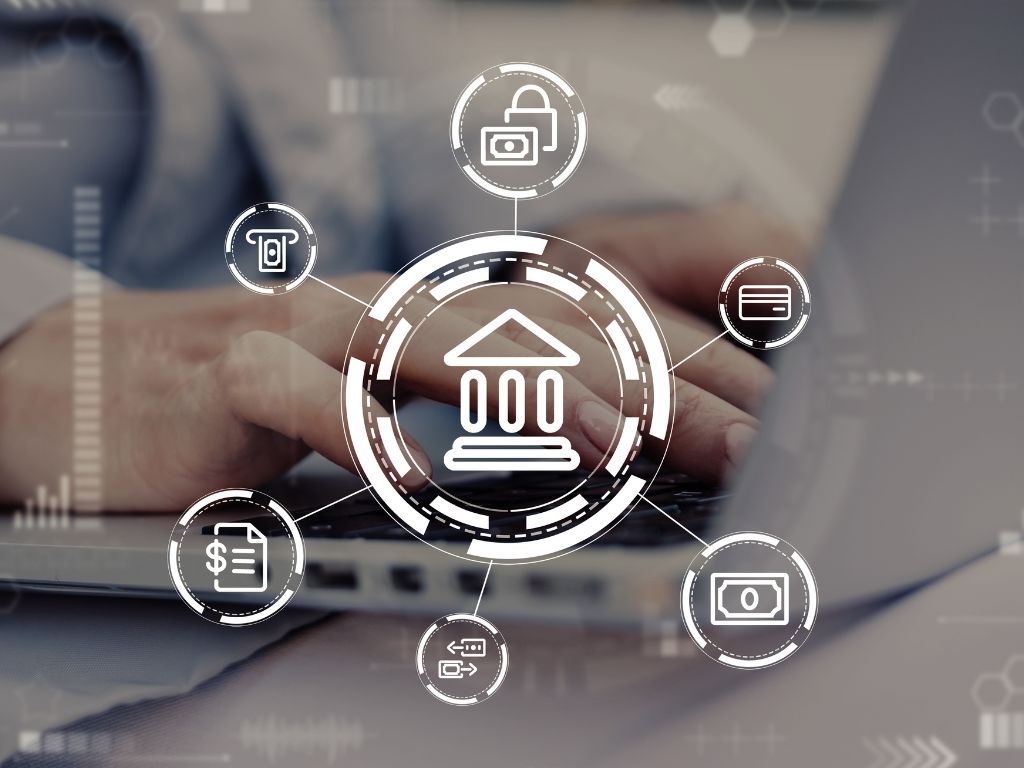
Options to Consider if You’re Struggling to Qualify
If your credit score or financial profile keeps you from qualifying for an unsecured personal loan, there are still practical alternatives that can help you access funds or rebuild your eligibility over time.
The key is choosing options that balance short-term needs with long-term financial health without falling into high-cost debt traps.
Here are the most effective alternatives to consider.
1. Credit Union Personal Loans or Payday Alternative Loans (PALs)
Credit unions are member-based and tend to look beyond credit scores. Many offer Payday Alternative Loans (PALs) small, short-term loans with capped interest rates, designed to help members avoid predatory payday lenders.
Best for: Borrowers with fair or rebuilding credit who can join a local or online credit union.
Advantages:
- Lower APRs (typically 6%–18%) than online subprime lenders
- Shorter repayment terms that encourage accountability
- Reported to credit bureaus, helping rebuild your credit
Tip: You can often join a credit union through a small donation or community affiliation even without prior membership.
2. Secured Personal Loans
If you own valuable assets (such as a savings account, CD, or vehicle), a secured personal loan may be easier to qualify for.
Collateral reduces lender risk and opens access to better rates and larger loan amounts.
Best for: Borrowers with poor credit who have a reliable asset and a clear repayment plan.
Key consideration: You risk losing the collateral if you default, so borrow conservatively and prioritize essential needs.
3. Credit-Builder Loans
Credit-builder loans are structured to help you create a positive payment history, not just access money.
The lender holds the funds in a secure account while you make monthly payments; when you finish, you receive the balance plus a stronger credit profile.
Best for: Borrowers with thin or damaged credit who want to qualify for larger loans later.
Bonus: These loans often come from community banks and credit unions, with approval rates above 80% for consistent income earners.
4. Co-Signed Loans
Adding a trusted co-signer with stronger credit can turn a borderline application into an approval.
The co-signer’s credit profile reassures lenders and can cut your interest rate significantly.
Best for: Borrowers with steady income but low credit scores.
Caution: Both you and the co-signer share full responsibility for repayment. Missed payments affect both credit reports.
5. Employer or Nonprofit Assistance Programs
Before taking on debt, explore employer, nonprofit, or community-based assistance programs.
These can cover essential expenses like medical bills, utilities, or emergency travel without high interest or credit checks.
Best for: Borrowers facing short-term hardship or emergency costs.
Examples:
- Employer-based financial wellness advances
- Local community action agencies offering small emergency grants
- Faith-based nonprofits providing interest-free microloans
📊 At a Glance: Safer Alternatives to High-Interest Unsecured Loans
Explore these safer lending options that can help you avoid predatory APRs and still access affordable funding:
| Option | Best For | Key Advantage | Main Drawback |
|---|---|---|---|
| Credit Union PALs | Limited or bad credit borrowers | Lower rates, reported to credit bureaus | Smaller amounts, membership required |
| Secured Loan | Borrowers with collateral | Easier approval, lower rates | Risk of asset loss |
| Credit-Builder Loan | Rebuilding credit history | Improves score, low risk | Access to funds delayed |
| Co-Signed Loan | Low credit but strong co-signer | Better rates and terms | Shared liability |
| Employer / Nonprofit Aid | Short-term needs | Often no interest or fees | Limited availability |

🔐 Responsible Borrowing at a Glance
When you’re taking out an unsecured loan with bad credit, the goal isn’t just approval—it’s making sure the loan helps your financial situation instead of making it worse. Following best practices will keep you in control and help you use the loan as a stepping stone toward better credit.
| Best Practice | Why It Matters | How to Do It Right |
|---|---|---|
| Borrow Only What You Need | Larger loans = higher payments and more interest | Calculate exact expenses before applying, avoid “extra cushion” borrowing |
| Compare Multiple Lenders | Rates and fees vary widely for bad credit loans | Use prequalification tools (soft checks) to shop safely |
| Read the Fine Print | Hidden fees can make loans unmanageable | Check for origination, late, and prepayment fees before signing |
| Prioritize On-Time Payments | Payment history drives your credit score | Automate payments or set reminders to avoid missed due dates |
| Keep Debt-to-Income (DTI) Low | Too much debt reduces approval odds and strains finances | Avoid new credit until you’ve repaid your loan |
| Use Loans Strategically | Loans can help credit if used wisely | Best for consolidating debt, covering true emergencies, or essential expenses |
✅ Key Takeaway: A bad credit loan should be a short-term solution with a long-term goal: building trust with lenders, improving your credit score, and avoiding financial setbacks.
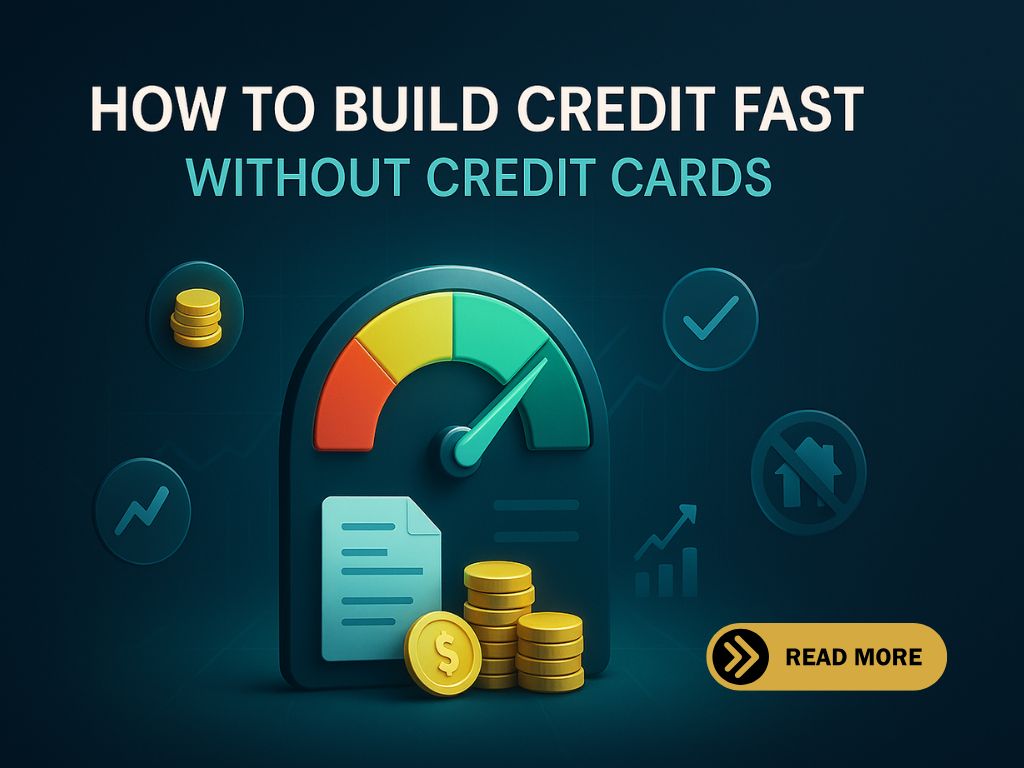
Conclusion
Unsecured personal loans for bad credit aren’t out of reach but they do require strategy, patience, and awareness of your financial position. Lenders aren’t just judging your past credit mistakes; they’re evaluating your current capacity to manage debt responsibly.
That means the difference between approval and denial often comes down to preparation: checking your credit reports, reducing your debt-to-income ratio, and comparing lenders that value more than just a number.
Borrowing with bad credit is never just about getting the funds, it’s about rebuilding credibility and protecting your financial stability in the process.
If a lender’s offer feels rushed, unclear, or too costly, it’s a sign to pause and reassess. Safer options exist, and taking time to compare them can save you far more than speed ever could.
The smartest borrowers don’t chase approval, they build readiness. Do that, and even with imperfect credit, you can access fair, transparent financing that supports your goals instead of compromising them.
According to Experian’s 2025 Borrower Insights Report, nearly half of bad-credit borrowers improved their credit scores within one year after responsibly managing a small unsecured loan. Strategic borrowing isn’t just about money, it’s about momentum.
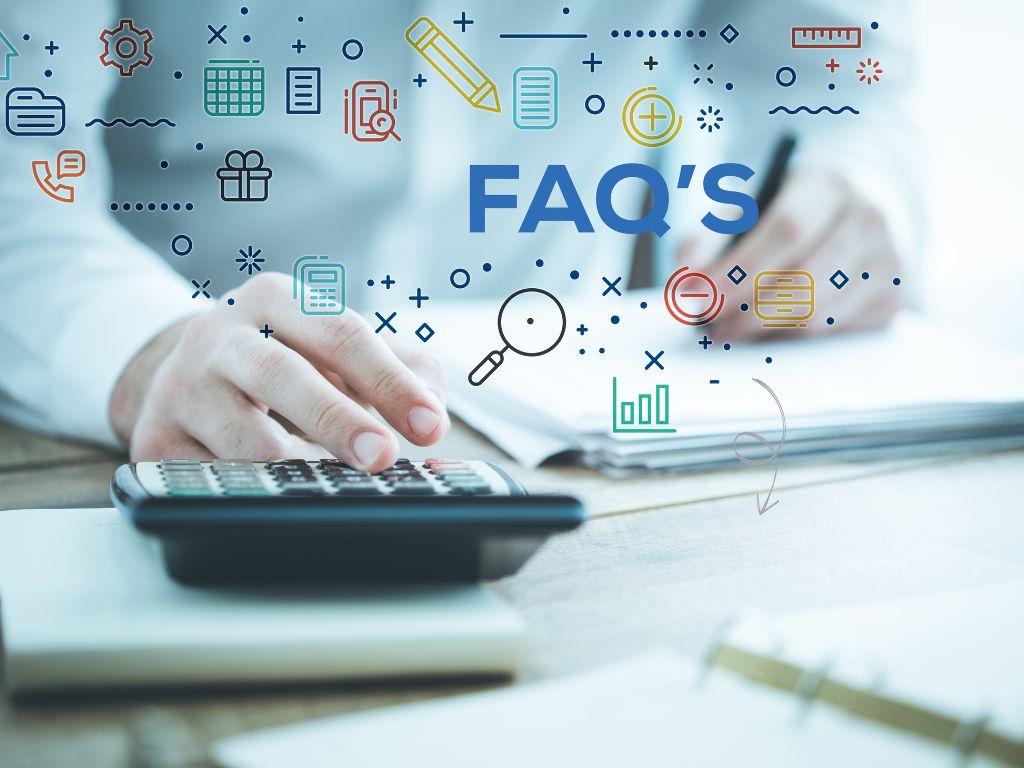
FAQs About Unsecured Personal Loans for Bad Credit
1. Can I get an unsecured personal loan with bad credit?
Yes, but approval depends on your income stability and debt-to-income ratio, not just your credit score. Lenders may offer smaller amounts or higher interest rates to offset the risk, so comparing multiple offers is key.
2. What credit score do I need to qualify?
Most lenders prefer scores above 600, but some online or credit union lenders approve applicants in the 500–580 range if income and repayment history are solid. Lower scores often mean higher APRs or shorter repayment terms.
3. Will applying for multiple loans hurt my credit?
Each formal application triggers a hard inquiry, which can temporarily lower your score by a few points. Use prequalification tools to compare rates first, they use soft checks and don’t impact your credit.
4. Are payday loans a good option if I can’t qualify elsewhere?
Generally, no. Payday loans carry extremely high interest rates (often 300% APR or more) and short repayment periods that can trap borrowers in a cycle of debt. Safer options include credit union PALs or secured personal loans with flexible repayment.
5. Can unsecured loans help rebuild my credit?
Yes if you make every payment on time. Lenders report your payment history to credit bureaus, so consistent repayment can steadily improve your credit profile over several months.
6. How can I get a lower interest rate with bad credit?
You can improve your chances by adding a co-signer, lowering your debt-to-income ratio, or applying with a credit union instead of an online subprime lender. Improving your credit score by even 20–30 points can also unlock noticeably better rates.
7. What’s the typical loan amount and interest rate for bad-credit borrowers?
Loan amounts typically range from $1,000–$15,000, with APRs averaging between 18% and 36%. Rates vary depending on your credit score, income, and lender type credit unions and community banks tend to offer the lowest.
8. How fast can I get funds after approval?
Many online lenders disburse funds within one to two business days. Credit unions and traditional banks may take slightly longer (three to five business days), especially if manual underwriting is required.
3 Comments
Personal Loans for Bad Credit: Best Options & How to Qualify - Look Up Loans · March 21, 2025 at 2:03 am
[…] For more guidance on choosing the best loan options for your situation, explore our Unsecured Personal Loans for Bad Credit Guide. […]
Personal Loans: Read This Before You Sign Anything - Look Up Loans · April 22, 2025 at 5:45 pm
[…] You can learn more about unsecured loans for bad credit here. […]
Personal Loan for Self-Employed: How to Get Approved Fast - Look Up Loans · April 26, 2025 at 2:50 am
[…] you’re worried about approval, unsecured personal loans for bad credit might give you more options even without […]